“Huge strides towards [rocket] reusability” were achieved, says SpaceX CEO Elon Musk, following Saturday morning’s (Jan. 10) flawless launch of his firm’s Falcon 9 rocket on a critical resupply mission to the space station for NASA, which also had a secondary objective of recovering the booster’s first stage via an unprecedented precision-guided landing on an ocean-going “drone.”
Despite making a “hard landing” on the vessel dubbed the “autonomous spaceport drone ship,” the 14 story tall Falcon 9 first stage did make it to the drone ship, positioned some 200 miles offshore of the Florida-Carolina coast, northeast of the launch site in the Atlantic Ocean. The rocket broke into pieces upon hitting the barge.
“Rocket made it to drone spaceport ship, but landed hard. Close, but no cigar this time. Bodes well for the future tho,” Musk tweeted soon after the launch and recovery attempt.
The drone ship, along with pieces of the rocket, was towed back to the Port of Jacksonville, FL, this afternoon, Sunday, Jan. 11. Photos captured by locals, and posted today on Reddit, NASASpaceflight and Spaceflight Now, showed the ship was intact with some damage, as reported by Musk.
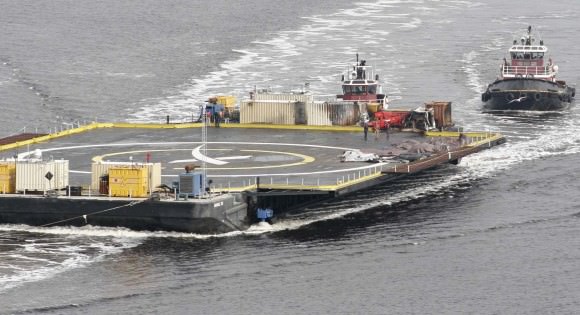
The goal of the commercial Falcon 9 rocket was to launch the SpaceX Dragon CRS-5 cargo vessel on a mission bound for the International Space Station (ISS). It lit up the night skies all around the Florida Space Coast following a flawless liftoff at 4:47 a.m. EST from Cape Canaveral Air Force Station.
After a two day chase, Dragon will reach the ISS at about 6:12 a.m. EST on Monday, Jan. 12. NASA TV live coverage starts at 4:30 a.m. EST.
The history-making attempt at recovering the Falcon 9 first stage was a first of its kind experiment to accomplish a pinpoint soft landing of a rocket onto a tiny platform in the middle of a vast ocean using a rocket assisted descent.
“Am super proud of my crew for making huge strides towards reusability on this mission. You guys rock!” Musk declared in a later tweet.
Whereas virtually every other news outlet declared the landing attempt a “failure” in the headline, my assessment as a scientist is the complete opposite – and that the experiment was “a very good first step towards the bold company goal of recovery and re-usability in the future” as I wrote in my post launch report here at Universe Today.
Listen to my live radio interview with BBC 5LIVE conducted Saturday night, discussing SpaceX’s first attempt to land and return their Falcon 9 booster.
This was a daring experiment involving re-lighting one of the first stage Merlin 1D engines three times to act as a retro rocket to slow the stage’s descent and aim for the drone ship.
The drone ship measures only 300 feet by 170 feet. That’s tiny compared to the Atlantic Ocean.
SpaceX achieved virtually all of their objectives in the daunting feat except for a soft landing on the drone ship.
The grid fins and trio of Merlin propulsive burns succeeded in slowing the booster from hypersonic velocity to subsonic.
The first stage was planned to make the soft landing by extending four landing legs to a width of about 70 feet to achieve an upright landing on the platform.
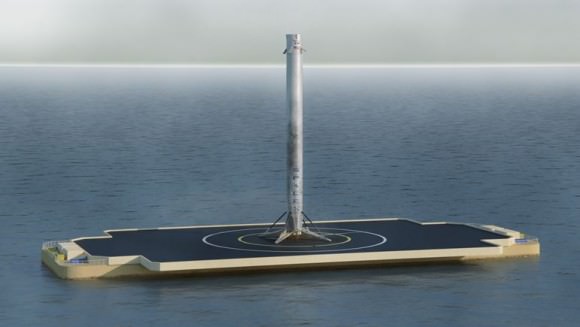
The hard landing apparently was caused by a lack of hydraulic fluid in the final stages of the landing
“Grid fins worked extremely well from hypersonic velocity to subsonic, but ran out of hydraulic fluid right before landing,” Musk tweeted.
No one has ever tried such a landing attempt before in the ocean says SpaceX. The company has conducted numerous successful soft landing tests on land, and several soft touchdowns on the ocean’s surface. But never before on a barge in the ocean.
So they will learn and move forward to the next experimental landing, that could come as early as February.
“Upcoming flight already has 50% more hydraulic fluid, so should have plenty of margin for landing attempt next month.”

Musk’s daring vision is to recover, refurbish, and reuse the first stage and dramatically reduce the high cost of access to space by introducing airline like operational concepts.
It remains to be seen whether his vision of reusing rockets can be made economical. Most of the space shuttle systems were reused, except for the huge external fuel tanks, but it was not a cheap proposition.
So this ocean recovery attempt is a critical first step towards that long term effort.
The Dragon CRS-5 spacecraft is loaded with over 5108 pounds (2317 kg) of scientific experiments, technology demonstrations, crew supplies, spare parts, food, water, clothing, and assorted research gear for the six person crew serving aboard the ISS.
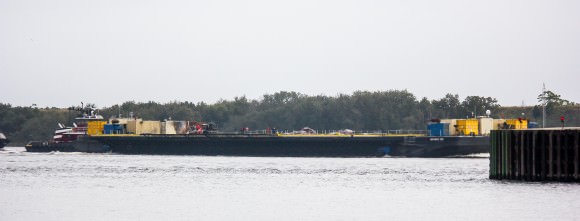
The launch marked the first US commercial resupply launch since the catastrophic destruction of an Orbital Sciences Antares rocket and Cygnus Orb-3 spacecraft bound for the ISS which exploded unexpectedly after launch from NASA Wallops, VA, on Oct. 28, 2014.
The US supply train to the ISS is now wholly dependent on SpaceX until Cygnus flights are resumed, hopefully by late 2015 on an alternate rocket, the Atlas V.
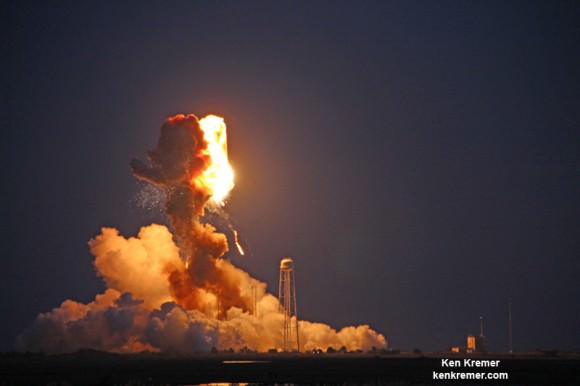
Stay tuned here for Ken’s continuing Earth and planetary science and human spaceflight news.
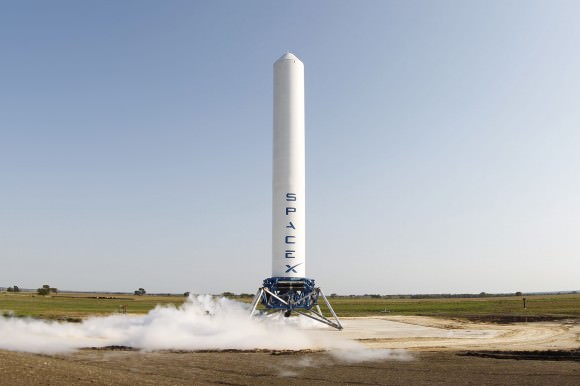
Credit: SpaceX
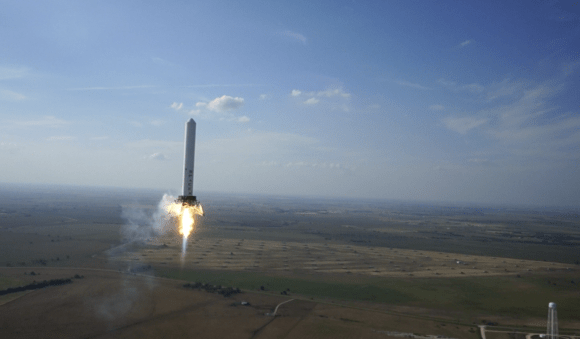


There are four more CRS flights this year, as well as other missions, so plenty of opportunity for SpaceX to make 1st stage recovery something of a routine :).
Dr. Kramer, it must be frustrating to have to deal with interviewers like the one from BBC News. It is unbelievable to hear such ignorant comments from the interviewer. I guess I can see it coming from other countries. Sadly, we have plenty of people like that in the United States as well.
I enjoyed the opportunity to speak to the BBC and interact with the host and discuss the importance of science and space. he was great and it was a very worthwhile chance to inform the public of whats happening.
Was definitely pretty ridiculous the way ‘failure’ was the word on the TV news, here at least. They’re simply going for ratings – showing footage of a rocket launching with the word failure on screen is very sensational. TV news is such complete trash these days – with CNN leading the way in that department. (I’m sure Fox news is just as bad but not being an alcoholic southern US redneck, I’ve never watched it.)
This is the headline from Fox News, “SpaceX deserves praise for audacious rocket landing attempt, say experts”. ( source is http://www.foxnews.com/science/2015/01/12/spacex-deserves-praise-for-audacious-rocket-landing-attempt-say-experts/ )
Looks like the rednecks got it right 🙂
The BBC’s science reporting is often poor to very poor. I remember a shocking example during the Fukushima Daiichi nuclear incident when they quoted the time for Iodine-131 to drop to safe levels as 8 days. 8 days is the half-life, the time required to drop to background levels was 80 days. If the incident had occurred in my back yard rather than the other side of the world, I really would have wanted the information to be accurate. Ex-pats often listen to BBC World Service…
They clearly have specialist presenters – not least Prof Brian Cox, from time to time – who are professionally qualified with a science background, but you have to suspect the front-men and women at the top of BBC journalism and management look down their noses at those with science degrees as culturally inferior to those with PPE or Ancient Greek from an Oxbridge college. It’s a British thing we may eradicate one day.
Unfortunately BBC journalists have a habit of trying to make interviews more lively by being unnecessarily argumentative and negative with their guests. If you think this is bad you should google how Jeremy Paxman treated UK astronaut Tim Peake a couple of years ago.
I do wonder how well the hypersonic grid fins can work at the low velocities near the landing. I have to suppose that Elon meant that they did not have enough hydraulic fluid to get the fine trajectory aiming close enough that engine gimbaling alone could hold it upright enough to land. I was under the impression that there was also a system of gas jet reaction ports near the top of the stage, but perhaps that system is only good in the near space density of the upper atmosphere where ballistic forces prevail. Landing on a barge in a location that could have more crosswinds than the low winds needed for the launch is harder, so learning the procedure this way will gain a more robust process in the end. We did not plunk those earliest capsules so precisely as this reporter seems to think. I’m old enough to have watched live while Vanguard failed ingloriously in 1958. We’ve come a very long way.
If you have a gimballing motor, thrusters for pitch and yaw are redundant. In the case of SpaceX’s Merlin engine, the turbine exhaust is vectored to take care of roll control, so no thrusters are needed for that either, even when only one engine is running. The transition from fast descent (where fins are useful) to landing will be quite quick, so losing fin control late in the flight would be bad news. The scorching of the deck structures on the barge make it look as if the rocket hit off-center, so maybe it did not fully recover from a slight topple induced by the non-operating fins.